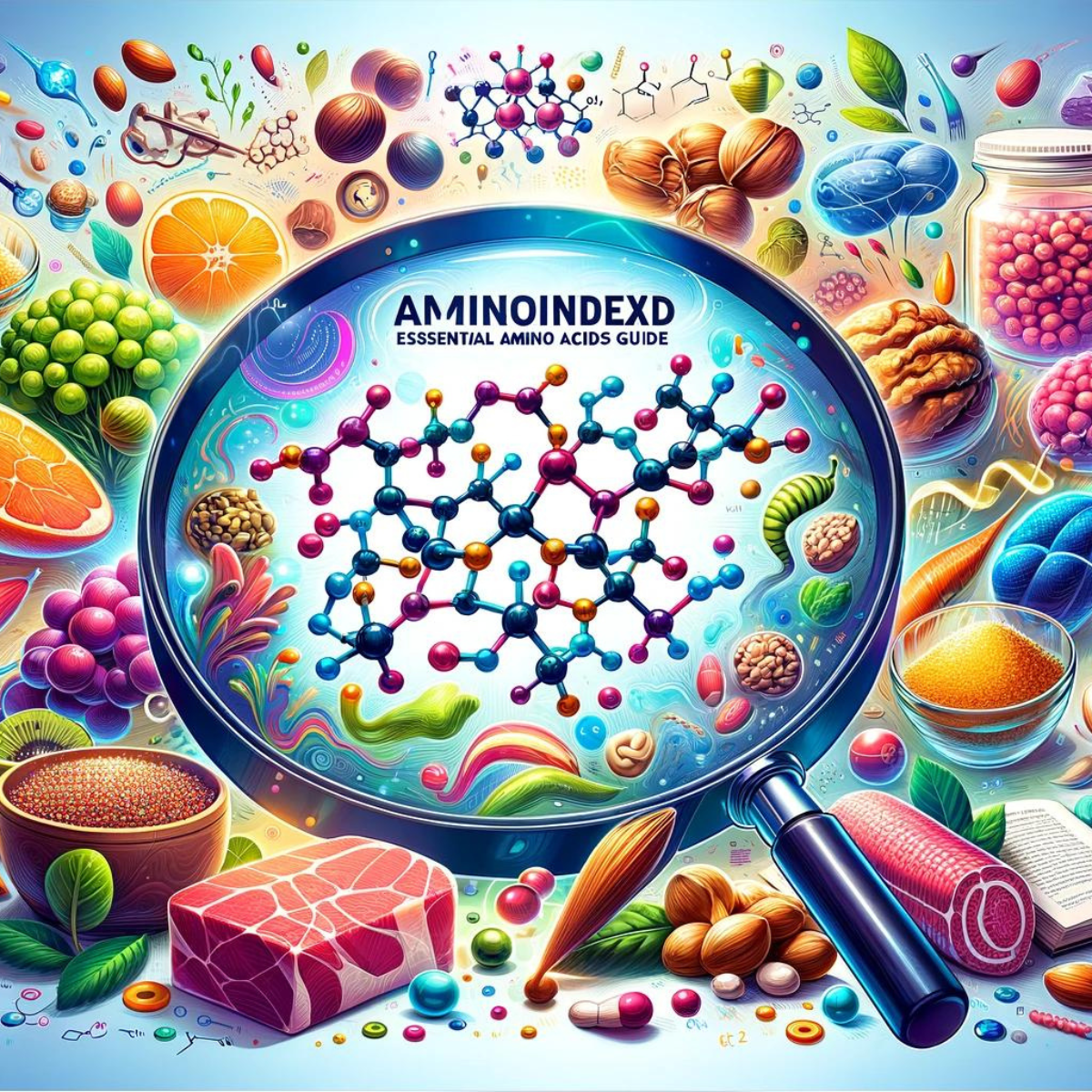Table of Contents
Introduction
In an era where high blood pressure, or hypertension, increasingly affects millions worldwide, the quest for natural, effective solutions has never been more critical. "Eat Right, Beat High BP: Your Nutrition Guide" is more than a mantra; it's a transformative approach that unveils the power of dietary choices in the battle against this silent threat. With heart health at the forefront of global health priorities, understanding how the foods we eat can influence our blood pressure levels is paramount.
This guide is not just about what to avoid on your plate; it's about discovering a symphony of flavours and nutrients that work harmoniously to protect your heart. From the potassium-rich embrace of leafy greens to the omega-3 serenades of fatty fish, each section is crafted to guide you through the dietary shifts that can pave the way for a life less pressured.
Join us on this culinary journey as we explore how simple, everyday decisions about food can become your strongest allies in maintaining optimal blood pressure. Whether you're seeking to prevent hypertension or manage existing conditions, this guide illuminates the path to a healthier heart through the power of nutrition.
Understanding Blood Pressure
Blood pressure might seem like just another set of numbers, but it's a vital sign that tells a compelling story about your heart health. Imagine your arteries as highways and blood as the vehicles. Blood pressure measures the force of blood pushing against the walls of your arteries as your heart pumps it around your body. It's like checking traffic flow and pressure on those highways. Healthy arteries allow blood to travel smoothly and efficiently like a clear, open road. However, high blood pressure, or hypertension, means there's more force than usual, turning peaceful drives into potential traffic jams and putting stress on your heart and arteries.
What's in the Numbers?
Blood pressure readings come in two numbers: systolic (the pressure while the heart beats) and diastolic (the pressure when the heart rests between beats). Ideally, we're looking for a reading below 120/80 mmHg. When these numbers start to climb, it's a red flag that your heart is working overtime.
Why It Matters
Consistently high blood pressure can lead to the roads (arteries) becoming less smooth, making it harder for traffic (blood) to get through, leading to heart attacks, strokes, and other complications. It's often called the "silent killer" because it can damage your heart and vessels without apparent symptoms, making understanding and monitoring your blood pressure crucial.
In this journey towards better heart health, recognizing the importance of your blood pressure is the first step. It's about more than just avoiding the bad; it's about embracing a lifestyle that keeps the roads clear and traffic moving smoothly. By understanding the basics of blood pressure, you're already paving the way for a healthier heart.
The Salt Connection
Salt, or sodium chloride, plays the villain in our blood pressure story, but it's more nuanced than simply labelling it as "bad." Our bodies need salt to function correctly—it's involved in muscle contractions, nerve transmissions, and balancing fluids. The twist? Most consume way more than necessary, leading to high blood pressure. Here's how to navigate these salty waters.
Sodium's Role in Blood Pressure
Imagine your body as a sponge for sodium. When you eat salt, your body holds onto water to balance sodium. More water increases the blood volume in your bloodstream—like adding more cars to our highway analogy—which means more pressure on the arterial walls. Over time, this can stiffen arteries and escalate the risk of hypertension.
Shaking the Salt Habit
The American Heart Association recommends no more than 2,300 milligrams daily, reaching an ideal limit of 1,500 mg for most adults. Yet, the average person consumes over 3,400 mg daily, mostly from processed foods, not the salt shaker.
Tips for Reducing Salt Intake:
- Read Labels: Processed and packaged foods can be sodium mines. Check nutrition labels and choose lower-sodium versions of your favourites.
- Fresh is Best: Emphasize fresh fruits and vegetables, which are naturally low in sodium and high in potassium, helping counteract sodium's effects.
- Spice It Up: Mix herbs and spices instead of salt to flavour your dishes.
- Mindful Dining Out: Restaurant meals are notorious for high sodium. Ask for meals to be prepared with less salt or sauce on the side.
The Payoff
Reducing sodium intake can improve blood pressure significantly. Some people, especially those with salt sensitivity, might notice more pronounced benefits. While adjusting your taste buds might take time, the payoff—a healthier heart and arteries—is worth the effort.
Sailing through the sea of sodium doesn't mean banishing salt entirely; it's about striking a balance. By becoming more mindful of how much and from where you're getting your sodium, you're taking a crucial step toward keeping your blood pressure in check and navigating toward calmer waters in your heart health journey.
Power Foods for Lowering Blood Pressure
Certain foods emerge as superheroes in the quest to manage blood pressure, boasting nutrients that naturally help reduce hypertension. Integrating these power foods into your diet can steer your health towards smoother sailing. Here's your roster of allies:
Leafy Greens: Spinach, kale, and chard are rich in potassium, which helps your kidneys flush out excess sodium—a villain in our story—and eases pressure on your arterial walls.
Berries: Blueberries, strawberries, and raspberries contain flavonoids, natural compounds that can improve blood vessel function and lower blood pressure.
Beets: Beets are high in nitric oxide, which can help open blood vessels and lower blood pressure. Their rich, earthy flavour makes them a great addition to salads and smoothies.
Oatmeal: Starting your day with a bowl of oatmeal provides a high-fibre, low-sodium, and low-fat foundation, helping to maintain healthy blood pressure throughout the day.
Bananas: This convenient snack is packed with potassium, which is vital for managing sodium levels and easing pressure on the cardiovascular system.
Salmon and Fatty Fish: Omega-3 fatty acids, abundant in salmon, mackerel, and sardines, offer significant heart health benefits, including reducing blood pressure and inflammation.
Garlic: Beyond its ability to ward off vampires, garlic can help lower blood pressure by boosting the production of nitric oxide, which helps relax blood vessels.
Dark Chocolate: Yes, you can have your chocolate and eat it too—provided it's dark and consumed in moderation. Look for at least 70% cocoa content for the best blood-pressure-lowering effects.
Seeds: Unsalted pumpkin, sunflower, and flax seeds are magnesium-rich snacks that can help lower blood pressure.
Pistachios: These tasty nuts are a great snack and have been shown to reduce blood pressure by reducing peripheral vascular resistance and heart rate.
Olive Oil: Rich in polyphenols, olive oil is linked with reductions in blood pressure. Its healthy fats make it a great alternative to butter.
Pomegranates: Thanks to their potent antioxidant content, drinking a cup of pomegranate juice might lower blood pressure in the short term.
Incorporating these powerful foods into your diet can transform your meals from mere sustenance to powerful tools in your fight against high blood pressure. Each item brings its unique blend of heart-healthy benefits, painting a delicious picture of variety and flavour. Remember, balance is critical—no single food holds the magic key to health, but together, they can form a formidable defence against hypertension.
The Role of Potassium, Magnesium, and Calcium
Adopting a heart-healthy eating plan is more than a dietary change; it's a commitment to nurturing your heart and vascular health. These plans are designed to lower blood pressure and improve overall heart health, offering a comprehensive approach beyond the dinner plate. Let's explore some of the most celebrated heart-healthy eating plans and how they can be your allies for optimal blood pressure.
DASH Diet (Dietary Approaches to Stop Hypertension)
Specifically formulated to combat high blood pressure, the DASH diet is a lifelong approach to healthy eating rich in fruits, vegetables, whole grains, and lean proteins. It emphasizes reducing sodium intake, increasing potassium, calcium, and magnesium, and limiting alcohol and sweets. Studies have shown that following the DASH diet can significantly reduce blood pressure within just a few weeks.
Mediterranean Diet
The Mediterranean diet is renowned for its heart-healthy benefits, including lowering blood pressure. It focuses on eating primarily plant-based foods, like fruits and vegetables, whole grains, legumes, and nuts. Healthy fats such as olive oil replace butter, and herbs and spices take the place of salt. Fish and poultry are encouraged over red meat. This diet is also linked to reduced risks of heart disease, stroke, and type 2 diabetes.
Plant-Based Diets
Eating a predominantly plant-based diet can improve heart health and lower blood pressure. This approach includes fruits, vegetables, beans, lentils, whole grains, nuts, and seeds. It limits processed foods, refined carbs, and animal products. Plant-based diets are rich in fibre, vitamins, and minerals and are known to support healthy blood pressure levels and reduce the risk of heart disease.
Implementing Heart-Healthy Eating Plans
- Start Small: Gradual changes are more sustainable. Add more fruits and vegetables to your meals, switch to whole grains, and introduce meatless meals into your week.
- Plan Your Meals: Meal planning can help you stay on track. Try new recipes that fit your chosen eating plan to keep things interesting.
- Be Mindful of Portions: Even healthy foods can contribute to weight gain if you overeat. Watch portion sizes to maintain a healthy weight, a crucial factor in blood pressure management.
- Stay Hydrated: Drinking enough water is essential for overall health and can help manage blood pressure. Aim for 8-10 glasses daily, more if you're active or live in a hot climate.
The Takeaway
Heart-healthy eating plans are diets and lifestyle changes that promote overall well-being. Whether you choose the DASH diet, the Mediterranean diet, or a plant-based approach, the key is consistency and making choices that fit your personal preferences and lifestyle. By adopting such a plan, you're working towards optimal blood pressure levels and investing in a healthier, happier future.
Heart-Healthy Eating Plans
Potassium, magnesium, and calcium play leading roles in the orchestration of nutrients that manage and lower blood pressure. These minerals are like the conductors of an orchestra, each contributing uniquely to the harmony of bodily functions and the maintenance of optimal blood pressure levels. Understanding their roles and how to ensure you're getting enough of them is crucial in the symphony of heart health.
Potassium: The Sodium Balancer
Potassium is the counterbalance to sodium in our diet. It helps relax blood vessel walls and excretes excess sodium, regulating blood pressure. The modern diet, high in processed foods, often skews towards too much sodium and not enough potassium, disrupting this critical balance. Foods rich in potassium, such as leafy greens, bananas, and sweet potatoes, help restore harmony and maintain healthy blood pressure.
Magnesium: The Natural Calcium Channel Blocker
Magnesium plays a multifaceted role in heart health, acting like a natural calcium channel blocker—a medication used to lower blood pressure. It helps blood vessels relax, reduces blood pressure, and improves blood flow. Despite its importance, many diets fall short in magnesium. Turn to foods like seeds, nuts, whole grains, and leafy green vegetables to boost your intake.
Calcium: Essential for Vascular Contraction and Relaxation
Calcium's role goes beyond building strong bones; it's also vital for the proper function of the heart and blood vessels. It aids in vascular contraction and relaxation, directly affecting blood pressure management. Dairy products are well-known calcium sources, but if you're dairy-free, you can find calcium in fortified plant milks, leafy greens, and almonds.
Ensuring Adequate Intake: A Balanced Approach
Incorporating various foods rich in these minerals into your diet is vital. Here's how you can ensure you're getting enough:
- Diversify Your Plate: Aim for a colourful plate filled with fruits, vegetables, whole grains, and lean proteins to cover your mineral needs.
- Check for Interactions: If you're on blood pressure medication, check with a healthcare professional about potential interactions with mineral supplements.
- Consider Supplements Carefully: While getting nutrients from food is ideal, some may need supplements to meet their needs. Consult with a healthcare provider to determine if this is the right approach.
Understanding and incorporating these essential minerals into your diet can significantly impact your blood pressure management efforts like in an orchestra, where each instrument's contribution is vital to the beauty of the symphony, potassium, magnesium, and calcium each play a crucial role in maintaining the harmony of your body's health.
Lifestyle and Dietary Synergy
While diet is pivotal in managing blood pressure and fostering heart health, it's most effective when part of a broader, synergistic lifestyle approach. Balanced nutrition, physical activity, stress management, and other healthy habits create a foundation for optimal cardiovascular wellness. Let's explore how these elements work in concert to amplify the benefits of a heart-healthy diet.
Physical Activity: The Beat Goes On
Regular exercise strengthens the heart, enabling it to pump more efficiently with less effort. This efficiency lowers the force on your arteries, thereby reducing blood pressure. Aim for at least 150 minutes of moderate-intensity aerobic activity, like walking or cycling, or 75 minutes of vigorous activity, such as running each week. Strength training exercises can enhance your heart health at least twice a week.
Weight Management: A Balanced Scale
Excess weight forces your heart to work harder, increasing blood pressure. A heart-healthy diet, coupled with regular exercise, can help you achieve and maintain a healthy weight. Even a modest weight loss can significantly lower blood pressure and reduce the risk of other cardiovascular diseases.
Stress Reduction: Finding Your Calm
Chronic stress contributes to high blood pressure. Techniques such as deep breathing, meditation, yoga, and mindful practices can help manage stress levels. These methods complement dietary efforts, creating a more relaxed body and mind conducive to heart health.
Sleep: The Silent Healer
Quality sleep is crucial for heart health. Poor sleep quality or insufficient sleep can lead to high blood pressure and increased heart disease risk. Establish a regular sleep routine; aim for 7-9 hours of restful sleep per night to support your heart health efforts.
Moderation in Alcohol and Caffeine Consumption
While moderate alcohol consumption can have some heart health benefits, excessive drinking can elevate blood pressure. Similarly, too much caffeine can cause a short-term spike in blood pressure. Moderation is vital—limiting alcohol to one drink per day for women and two for men and monitoring caffeine intake can prevent adverse effects on blood pressure.
Tobacco-Free Lifestyle
Smoking and tobacco use significantly increase blood pressure and harm the heart. Quitting smoking can improve heart health dramatically, regardless of how long you've smoked. Many resources are available to support quitting, from counselling services to nicotine replacement therapies.
Creating a Cohesive Plan
Implementing these lifestyle changes alongside a heart-healthy diet can create a powerful synergy, amplifying the positive effects on blood pressure and cardiovascular health. Start with small, manageable changes, and gradually build a comprehensive lifestyle that supports your heart health goals. Remember, consistency is key—making these practices a regular part of your life will significantly benefit your heart and well-being.
Recipes and Meal Ideas
Embracing a heart-healthy diet doesn't mean sacrificing flavour. The following recipes and meal ideas are designed to delight your taste buds while supporting optimal blood pressure and overall cardiovascular health. Each dish is packed with nutrients essential for heart wellness, demonstrating that nutritious eating can also be delicious.
Breakfast: Berry and Spinach Smoothie
Kickstart your day with a smoothie that blends the antioxidant power of berries with the potassium-rich goodness of spinach.
- Ingredients: 1 cup mixed berries (fresh or frozen), 1 cup baby spinach, 1 banana, ½ cup unsweetened almond milk, 1 tablespoon flaxseeds.
- Preparation: Blend all ingredients until smooth. Enjoy immediately for a refreshing, nutrient-packed breakfast.
Lunch: Mediterranean Chickpea Salad
This salad is a fibre-rich, protein-packed lunch option that's easy to prepare and perfect for on-the-go.
- Ingredients: 1 can chickpeas (drained and rinsed), cherry tomatoes, cucumber, red onion, feta cheese, olives, olive oil, lemon juice, salt-free seasoning.
- Preparation: Combine chickpeas, chopped vegetables, feta, and olives. Dress with olive oil, lemon juice, and seasoning.
Dinner: Baked Salmon with Quinoa and Steamed Broccoli
Omega-3 fatty acids in salmon support heart health, paired with quinoa for a protein and magnesium boost, and broccoli, a powerhouse of vitamins.
- Ingredients: 4 salmon fillets, 1 cup quinoa, 2 cups broccoli florets, olive oil, lemon, herbs.
- Preparation: Season salmon with lemon and herbs and bake at 375°F for 15-20 minutes. Cook quinoa as directed. Steam broccoli until tender. Serve together for a balanced, heart-healthy dinner.
Snack: Avocado and Whole-Grain Toast
A simple yet satisfying snack that combines avocado's healthy fats with whole-grain bread's fibre.
- Ingredients: 1 ripe avocado, slices of whole-grain bread, lemon juice, pepper, and optional toppings like tomato or radish.
- Preparation: Mash avocado with lemon juice and pepper. Spread on toasted bread. Add toppings if desired.
Dessert: Dark Chocolate and Almond Bites
Satisfy your sweet tooth with a heart-friendly dessert. Dark chocolate and almonds are a tasty duo that supports heart health.
- Ingredients: Dark chocolate (at least 70% cocoa), whole almonds.
- Preparation: Melt dark chocolate, dip almonds, place on a baking sheet, and refrigerate until set.
Tailoring Meals for Heart Health
These recipes are just a starting point. Heart-healthy eating is about making informed choices and understanding how ingredients and their preparation affect cardiovascular wellness. Experiment with flavours and ingredients within the heart-healthy guidelines to create delicious dishes. By incorporating a variety of nutrient-rich foods, limiting sodium, and focusing on whole foods, you can enjoy a diverse, flavourful diet that's good for your heart and pleasing to your palate.
For those inspired to take their heart-healthy diet to the next level, we have curated a collection of delicious, easy-to-prepare recipes on our Nourish page. These recipes are designed to align with the nutritional guidelines discussed here, offering you a practical toolkit to implement these principles in your everyday meals. Explore our Nourish page for more inspiration and guidance on your journey to optimal heart health.
Supplementing Heart Health
In addition to a heart-healthy diet, certain supplements may offer further benefits in managing high blood pressure and supporting overall cardiovascular health. While prioritizing a diet full of whole, nutrient-rich foods is essential, supplements can provide targeted support.
- Omega-3 fatty acids: Found in fish oil, they help reduce inflammation and support heart function.
- Coenzyme Q10 (CoQ10): This natural antioxidant can improve heart muscle function.
- Magnesium: Important for blood pressure regulation and heart rhythm, especially for those with low levels.
- Herbal Supplements: Garlic extract and hibiscus tea have potential for lowering blood pressure but consult your healthcare provider before starting.
Quality is key when choosing supplements. Opt for reputable brands and follow recommended dosages carefully. Supplements should complement a nutritious diet and healthy lifestyle, not replace them. For the best outcomes, combine these strategies with regular physical activity, stress management, and adequate sleep.
Conclusion
Embarking on a heart-healthy lifestyle is a commitment to your well-being. Managing blood pressure becomes an achievable goal through the right balance of nutritious foods, physical activity, and mindful living. Let the insights and tips from this guide inspire you to make choices that nourish your heart and enhance your life. Remember, each small step is a victory in your journey to better health. For more inspiration and heart-healthy recipes, check our Nourish page. Here's to a healthier heart and a happier you.
Disclaimer:
This article is for informational purposes only and is not intended to substitute for professional medical advice, diagnosis, or treatment. Always seek the advice of your physician or another qualified health provider with any questions you may have regarding a medical condition or before starting any new diet or exercise program. Never disregard professional medical advice or delay seeking it because of something you have read on this site.
References
- National Heart, Lung, and Blood Institute. (2006). Your Guide to Lowering Your Blood Pressure With DASH [PDF – 792K]. NIH Pub. No. 06-4082. Bethesda, MD: National Heart, Lung, and Blood Institute. Retrieved March 29, 2024, from Your Guide to Lowering Your Blood Pressure With DASH [PDF – 792K]
- National Heart, Lung, and Blood Institute. (2019). Sleep Deprivation and Deficiency. Retrieved March 29, 2024, from https://www.nhlbi.nih.gov/health-topics/sleep-deprivation-and-deficiency.
- Turban, S., Juraschek, S. P., Miller, E. R., III, Anderson, C. A. M., White, K., Charleston, J., & Appel, L. J. (2021). Randomized Trial on the Effects of Dietary Potassium on Blood Pressure and Serum Potassium Levels in Adults with Chronic Kidney Disease. Nutrients, 13(8), 2678. https://doi.org/10.3390/nu13082678. Published July 31, 2021.
- American Heart Association. (2022). "Dietary Recommendations for Healthy Blood Pressure." Retrieved from https://www.heart.org/en/health-topics/high-blood-pressure/changes-you-can-make-to-manage-high-blood-pressure/dietary-recommendations-for-healthy-blood-pressure.
- Pallazola, V. A., Davis, D. M., Whelton, S. P., Arnett, D. K., Stone, N. J., & Welty, F. K. (2019). A Clinician's Guide to Healthy Eating for Cardiovascular Disease Prevention. Mayo Clinic Proceedings: Innovations, Quality & Outcomes, 3(3), 251-267. https://doi.org/10.1016/j.mayocpiqo.2019.05.001
- Mayo Clinic Staff. (2023). "Mediterranean Diet: A Heart-Healthy Eating Plan." Mayo Clinic. Retrieved from https://www.mayoclinic.org/healthy-lifestyle/nutrition-and-healthy-eating/in-depth/mediterranean-diet/art-20047801.



















